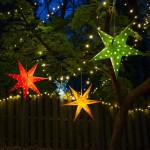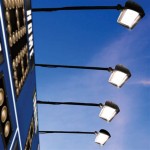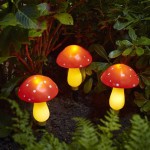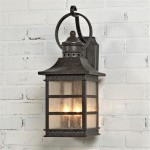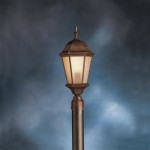Outdoor Strobe Lighting Techniques
Outdoor strobe lighting is a powerful tool for photographers seeking dramatic and eye-catching images. It allows photographers to freeze motion, control light direction, and create a range of creative effects. Whether capturing a dynamic sports scene, illuminating a majestic landscape, or creating a striking portrait, mastering outdoor strobe techniques can elevate your photography to new heights.
1. Understanding Strobe Exposure
Strobe photography differs significantly from natural light photography. In natural light, the shutter speed determines the exposure duration, capturing the light that falls on the sensor during that time. However, with strobes, the exposure time is defined by the duration of the strobe flash, typically a fraction of a second or even a millisecond. This allows photographers to freeze motion, even in bright daylight, and control the light source independently of ambient light.
To achieve proper exposure in strobe photography, you need to balance the ambient light (natural light) with the strobe light. This can be accomplished by adjusting:
- Shutter speed: To control the amount of ambient light entering the camera. A fast shutter speed minimizes the influence of ambient light, while a slower shutter speed allows more ambient light to contribute to the exposure.
- Aperture: To control the depth of field and the amount of light reaching the sensor. A wider aperture allows more light to pass through the lens, while a narrower aperture reduces the amount of light.
- ISO: To adjust the sensor's sensitivity to light. A higher ISO increases sensitivity but can introduce noise.
- Strobe power: To adjust the intensity of the strobe flash. More power results in a brighter flash, while less power creates a dimmer flash.
Mastering these settings requires practice and familiarity with your equipment. Experimenting with different combinations is crucial to finding the perfect balance between ambient light and strobe light for your desired effect.
2. Positioning and Modifying Strobe Light
The placement and modification of the strobe light directly impact the quality and direction of the light, influencing the overall mood and impact of the image. Here are key aspects to consider:
- Light direction: The angle of the strobe light relative to the subject determines the direction and quality of the light. Side lighting creates dramatic shadows and emphasizes texture, while backlighting creates a halo effect and separates the subject from the background. Frontal lighting provides even illumination, often used for portraits.
- Light source distance: The distance between the strobe light and the subject influences the intensity and spread of the light. Moving the strobe closer to the subject increases the intensity and creates a smaller light pool, while moving it farther away reduces the intensity and expands the light pool.
- Light modifiers: Strobe light modifiers, such as softboxes, umbrellas, diffusers, and reflectors, shape and soften the light output. Softboxes create a softer, more even light with a wider spread, while umbrellas produce a softer and broader light pool with a more pronounced catchlight. Diffusers soften the light and reduce harsh shadows, while reflectors bounce the light back towards the subject, filling in shadows and adding catchlight.
Experimenting with different light modifiers, positions, and distances is essential in determining the desired aesthetic for your image. Understanding the impact of these factors allows you to create captivating lighting effects for your outdoor photography.
3. Creative Applications of Outdoor Strobes
Outdoor strobe lighting offers numerous creative possibilities, allowing photographers to enhance their images and showcase their artistic vision. Here are some common applications:
- Freezing motion: The fast flash duration of strobes allows photographers to capture fleeting moments, such as athletes in mid-air, water droplets frozen in time, or birds in flight. This technique adds dynamism and a sense of urgency to images, showcasing the subject's movement with incredible detail.
- High-speed synchronisation (HSS): HSS technology allows photographers to use high shutter speeds with strobes, even in bright daylight. This enables them to control the ambient light and create a more balanced exposure, ensuring a more natural-looking image with frozen motion.
- Dramatic lighting: Using strobes to highlight specific elements in a landscape, such as a lone tree against a dramatic sky or a waterfall cascading down a rocky cliff, can create a captivating and visually striking image.
- Creative portraits: Outdoor portraits can be elevated by using strobes to create a variety of mood and lighting effects. Utilizing a single strobe to create a dramatic rim light, or multiple strobes to sculpt light and shadows, can add depth and dimension to your portraits.
These are just a few examples of the many creative applications of outdoor strobe lighting. By exploring different techniques and experimenting with your equipment, you can unlock a world of possibilities and create impactful images that truly stand out.

Off Flash 5 Techniques For Dramatic Portraits Rangefinder

Outdoor Flash Photography Tips For Natural Or Dramatic Portraits

How To Mix Ambient Light And Fill Flash For Outdoor Portraits

Outdoor Flash Photography Tips For Natural Or Dramatic Portraits

How To Use Off Flash For Portraits Outdoor Photography

Creative Lighting Outdoors With Small Flash And Gels Rogue Photographic Design

Off Flash Vs Natural Light Which Is Best For Outdoor Portraits Shutterbug

Balancing Strobe Lights With A Setting Sun Lighting Tutorial

Strobes Daylight A Lighting Tutorial For Photography

Love Lighting With Strobes Outdoors Use An Nd Filter For A Shallow Depth Of Field
